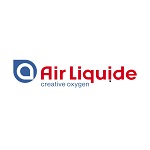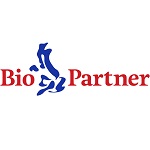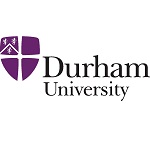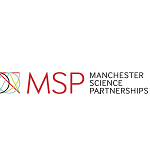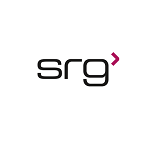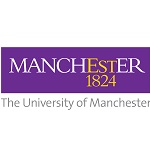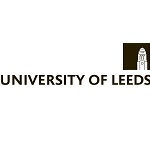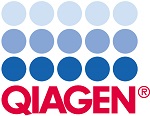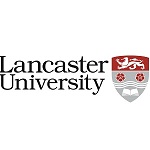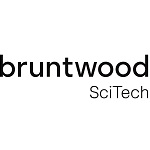From Spin-outs to the Future of Life Sciences. Insight from BioFocus 2025

Early in June 2025, we had the pleasure of attending the BioFocus 2025 conference at the Catalyst building, nestled in the heart of the Helix Science Park in Newcastle upon Tyne. Hosted by Bionow, this annual event brought together life sciences professionals, innovators, and advocates from across the North of England—and what a day it was.
With sunshine pouring through the expansive glass atrium of the Catalyst, located at the Helix in Newcastle, the scene was set for a day that was equal parts inspirational and thought-provoking. This year’s theme, The Future of the Industry, resonated deeply with the conversations and connections that unfolded throughout the day. An event organised by the team at BioNow.
Article contents
- The strength of the North East Life Sciences ecosystem
- Significant challenges remain with Life Sciences investment
- The future Life Sciences in the North East of the UK
- At Arttia Creative, we directly understand the challenges within the Life Sciences industry.
- The university spin-out scale up problem
- The power of storytelling for start-up investment
- How your communications drive revenue generation
- A regional Life Sciences future, built collaboratively alongside significant mindset changes
- Life Sciences - looking ahead - Arttia Creative know how to help
- We know the secret to fixing the North East Life Sciences investment problem
- The Takeaway.
The strength of the North East Life Sciences ecosystem
The day began with the keynote from Clare Trippett titled “Manufacturing the Future: The North East’s Life Sciences Ecosystem”. Clare painted a compelling picture of a region on the rise—home to over 1,000 life sciences companies and boasting 149% growth in the pharmaceutical sector over the past five years. Her presentation echoed something we at Arttia Creative are acutely aware of: that innovation is thriving in the North East of the UK.
Significant challenges remain with Life Sciences investment
However, it was rightly highlighted that this growth isn’t without its challenges.
One of the most pressing was investment.
The stark funding divide between the North and South of the UK. In 2024, Tyne and Wear secured just £2.6 million in health-related funding, compared to the staggering £902 million allocated to London.
The numbers speak volumes, setting the stage for a day of honest, solutions-focused discussion. But nobody on stage had any answers. At Arttia Creative, we know the secret to moving investment from London to the North.
The future Life Sciences in the North East of the UK
Following the keynote, the “State of the Nation” panel discussion, chaired by Michelle Duggan, brought forward a powerful dialogue around the structural issues facing life sciences in our region.
Panellists, including Dr. Dan Todd, Heather Allinson, Richard Hall, and Helen Brain, didn’t hold back. They tackled what many of us already know to be true: we have a scale-up problem.
While the North East produces remarkable university spin-outs and early-stage ventures, the growth trajectory often falters. Why? Because, as one panellist put it, “rungs are missing on the funding ladder.” Companies often find themselves caught between early-stage support and the larger-scale growth capital they desperately need.
This isn’t just a regional frustration—it’s a national economic inefficiency. High-risk, high-reward innovations can’t thrive on early investment alone. They need more continuity, more risk-tolerant capital, and more regional funding structures that reflect the value being generated in a specific North East region of the UK.
At Arttia Creative, we directly understand the challenges within the Life Sciences industry.
As a dedicated life sciences marketing agency operating nationally and internationally, we partner with many ambitious early-stage life science, biotech, and healthcare innovators. Whether we’re supporting a medical device company with professional medical website design or helping a university spin-out refine their brand and digital presence, we see the same bottlenecks our panellists described.
Communication is key
From a communications perspective, we also see an opportunity. The more clearly companies can articulate their vision, science, and market potential, the better positioned they are to advance to the next funding rung. This is where strategic life sciences and healthcare, creative content marketing, and compelling life science branding have a real commercial impact.
The university spin-out scale up problem
Being a university spin-out venture has its challenges, but what happens over the longer term?
Taking a life science or biotech innovation to market can take many years. Years that require significant investment and a long-term perspective from venture capitalists. This means you need to find and engage with investors who are willing to take a risk over a much longer period than those who are 'risk-averse' and need to achieve a faster return.
To find venture capitalists or investment companies, you will need to look beyond your immediate area. International investment is likely the most effective approach. This is where your digital and marketing literature plays a bigger role. To meet in person with international investors takes time and money. Initial interactions can occur through your website, slide deck, or marketing materials.
This is why your company must have its communications professionally produced and managed. Leaving you time to focus on your science with peace of mind that your communications are clear, up to date and conversion-driven.
